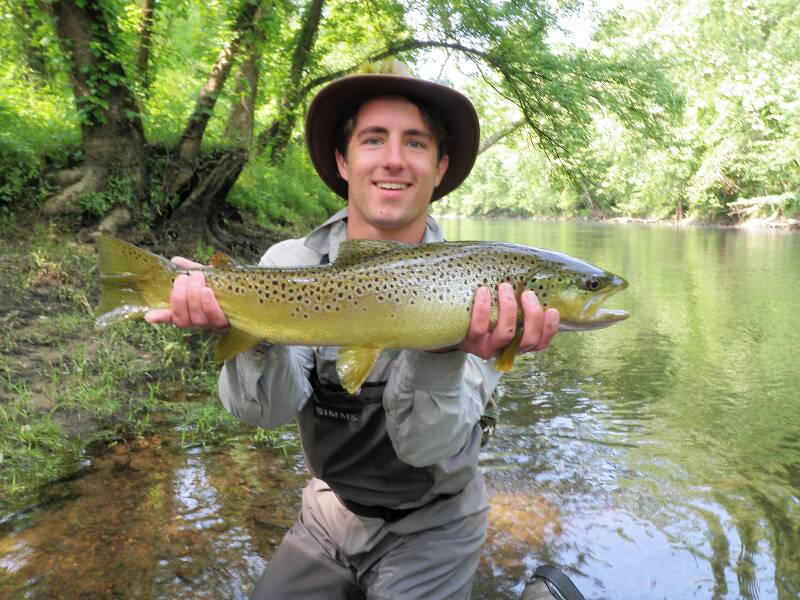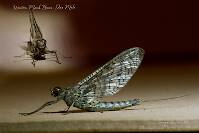
Blue-winged Olives
Baetis
Tiny Baetis mayflies are perhaps the most commonly encountered and imitated by anglers on all American trout streams due to their great abundance, widespread distribution, and trout-friendly emergence habits.
Featured on the forum

This one seems to lead to Couplet 35 of the Key to Genera of Perlodidae Nymphs and the genus Isoperla, but I'm skeptical that's correct based on the general look. I need to get it under the microscope to review several choices in the key, and it'll probably end up a different Perlodidae.

Troutnut is a project started in 2003 by salmonid ecologist Jason "Troutnut" Neuswanger to help anglers and
fly tyers unabashedly embrace the entomological side of the sport. Learn more about Troutnut or
support the project for an enhanced experience here.
Jesse on May 13, 2012May 13th, 2012, 4:44 pm EDT
Someone tell me (with understandable words) exactly what a mayfly spinner is!? I have always thought that it was a mayflies last life stage before it dies. But i have heard it's a separate mayfly from the actual; such as a march brown dun vs. a spinner, the mating stage, blah blah blah and more. Whats up here guys i want to know?
Most of us fish our whole lives..not knowing its not the fish that we are after.
http://www.filingoflyfishing.com
http://www.filingoflyfishing.com
Entoman on May 13, 2012May 13th, 2012, 4:57 pm EDT
Hi Jess,
When mayflies hatch, the duns fly off the water to find a safe place to molt into fully mature adults or spinners. This usually takes a day or two. They then come back to mate and lay their eggs. They die soon after with many ending up in the water. The spinner looks just like the dun but usually shinier, perhaps a little darker, and with clearer wings. Caddis and stoneflies don't molt after hatching.
When mayflies hatch, the duns fly off the water to find a safe place to molt into fully mature adults or spinners. This usually takes a day or two. They then come back to mate and lay their eggs. They die soon after with many ending up in the water. The spinner looks just like the dun but usually shinier, perhaps a little darker, and with clearer wings. Caddis and stoneflies don't molt after hatching.
"It's not that I find fishing so important, it's just that I find all other endeavors of Man equally unimportant... And not nearly as much fun!" Robert Traver, Anatomy of a Fisherman
Konchu on May 13, 2012May 13th, 2012, 5:01 pm EDT
the usual mayfly life cycle goes like this:
egg (laid in water)
nymph (molts several times as it grows in the water)
dun (a winged stage that leaves the water, but does not mate; this stage molts to form the next state)
spinner (the sexually mature stage that mates and lays eggs)
egg (laid in water)
nymph (molts several times as it grows in the water)
dun (a winged stage that leaves the water, but does not mate; this stage molts to form the next state)
spinner (the sexually mature stage that mates and lays eggs)
Quick Reply
Related Discussions
Topic
Replies
Last Reply
2
Apr 10, 2020
by Partsman
by Partsman
25
May 2, 2007
by Quillgordon
by Quillgordon
1
Sep 9, 2008
by GONZO
by GONZO





